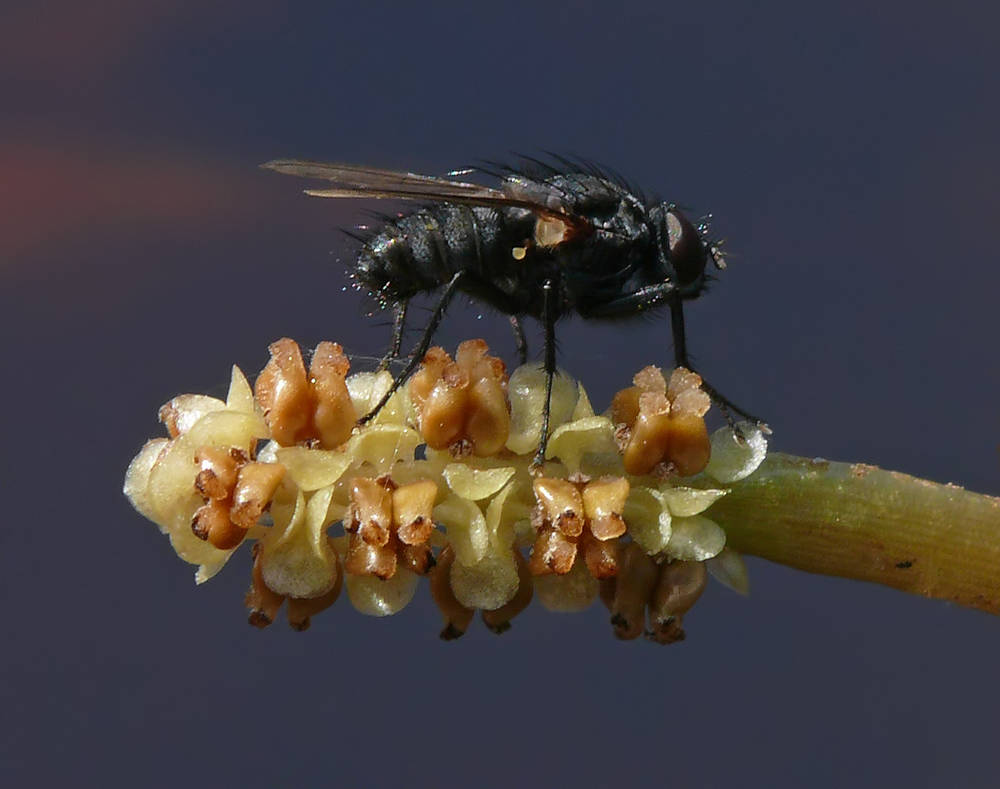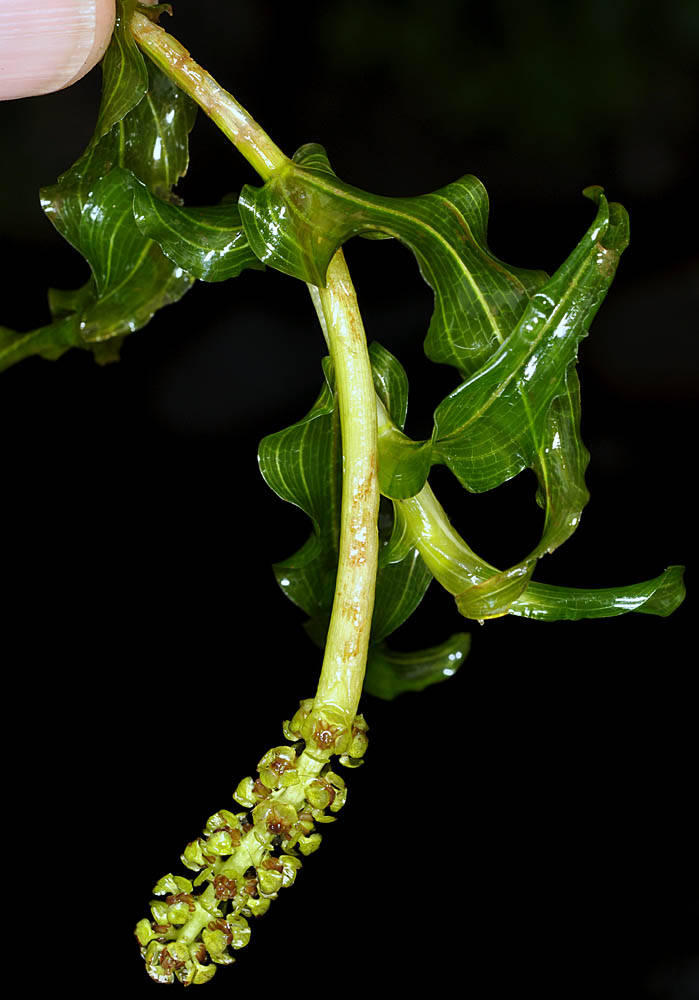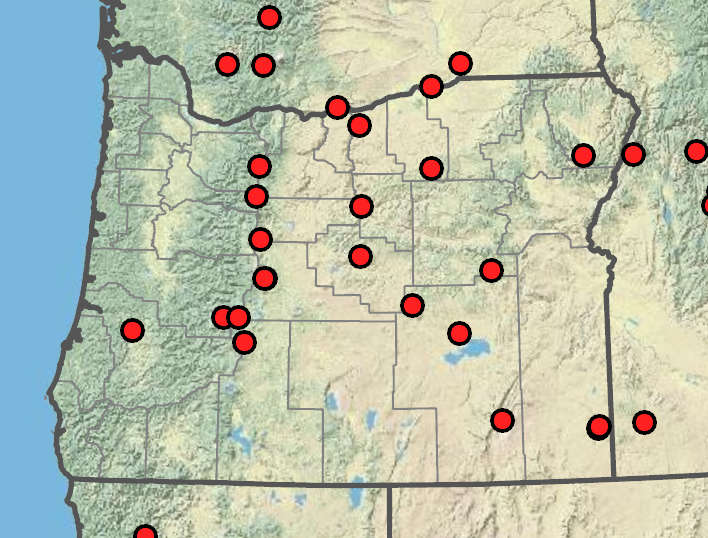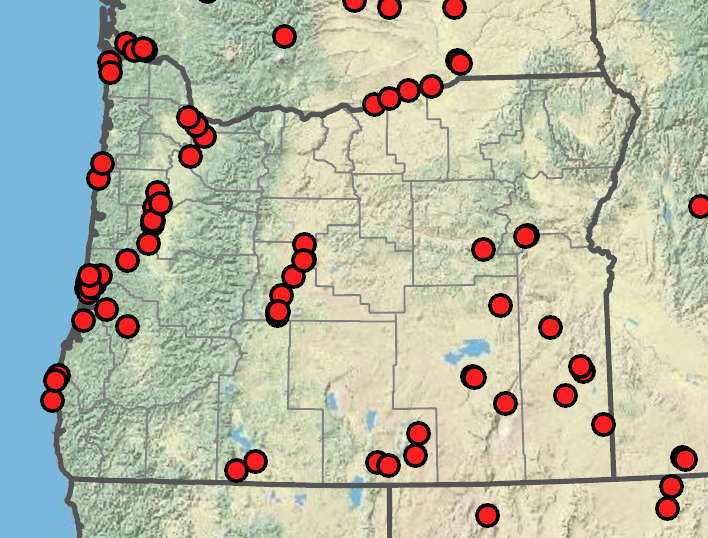Potamogeton alpinus
Potamogeton richardsonii
northern pondweed, reddish pondweed
clasping-leaved pondweed, Richardson's pondweed
terete; to 200 cm; nodal glands absent.
terete; to 100 cm; nodal glands absent.
submersed and floating or submersed only.
submersed, sessile, attached at stem nodes, not attached to stipules;
stipules 1.2– 1.7 mm, fibrous, disintegrating to persistent fibers; even on proximal portion of stem;
tip shredding, obtuse;
blades ovate-lanceolate to narrowly lanceolate, 1–12 cm, 10–20 mm wide;
base rounded, clasping;
margins entire to wavy;
tip acute to obtuse; lacunae absent;
veins 3–35.
elliptic or oblanceolate to obovate or oblonglinear, 40–70(100) × 10–25(40)mm; reddish green;
base gradually tapering to petiole;
tip obtuse or acute;
veins (7)9–13(15);
petioles 0–12 mm.
sessile, attached to stem nodes, not attached to stipules;
stipules (12)15–25(40)mm;
tip blunt;
blades oblong-linear to linear-lanceolate, 45–180(250) × 5–20 mm;
base rounded to cuneate;
margins entire;
tip obtuse or acute; lacunae in 0–6 rows on each side of midvein;
veins 7–9.
emersed;
spikes cylindric, 10–35 mm;
peduncles terminal or axillary; erect, 30– 100(160)mm.
emersed;
spikes cylindric, 13–37 mm;
peduncles terminal or axillary; erect to rarely recurved, 15–148 mm.
pedicellate, obovoid; turgid; (2.5)3–3.5 × (1.7)2–2.4 mm, dorsally keeled, laterally keeled or not;
beaks dorsally curved, 0.5–0.9 mm.
sessile, obovoid; turgid to concave, 2.2–4.2 × 1.7–2.9 mm; greenish brown, rarely dorsally keeled;
beaks erect, 0.4–0.7 mm.
Potamogeton alpinus
Potamogeton richardsonii
Ponds, lakes, and slow-moving streams. 1200–2200m. BR, BW, Casc. CA, ID, NV, WA; north to British Columbia, east to Greenland; Eurasia. Native.
Potamogeton alpinus is often red when fresh. This species hybridizes with P. nodosus, P. gramineus, and P. praelongus.
Alkaline lakes, streams, and rivers. 0–2400m. BR, BW, CR, ECas, Est, Lava, WV. CA, ID, NV, WA; north to Northwest Territories, east to CT. Native.
This species hybridizes with P. gramineus and P. nodosus.
Nick Otting, Richard Brainerd, Barbara Wilson
Nick Otting, Richard Brainerd, Barbara Wilson
- Local floras:
BC,
CA,
OR,
WA
- Local Web sites:
CalFlora,
CalPhotos,
Flora NW,
PNW Herbaria
WildflowerSearch
iNaturalist (observations)
USDA Plants Database
- LBJ Wildflower Center
- SEINet
- Plants of the World Online
- Encyclopedia of Life
- Wikipedia
- Google Image Search
- Local floras:
BC,
CA,
OR,
WA
- Local Web sites:
CalFlora,
CalPhotos,
Flora NW,
PNW Herbaria
WildflowerSearch
iNaturalist (observations)
USDA Plants Database
- LBJ Wildflower Center
- SEINet
- Plants of the World Online
- Encyclopedia of Life
- Wikipedia
- Google Image Search





